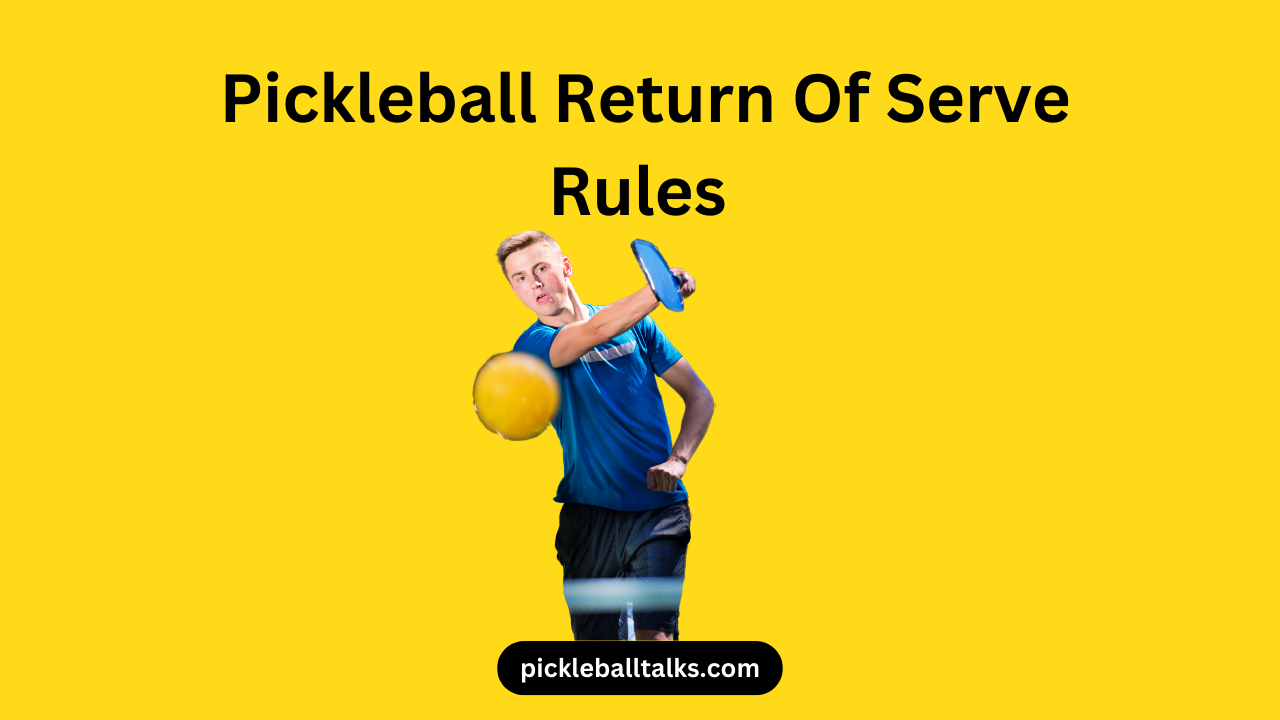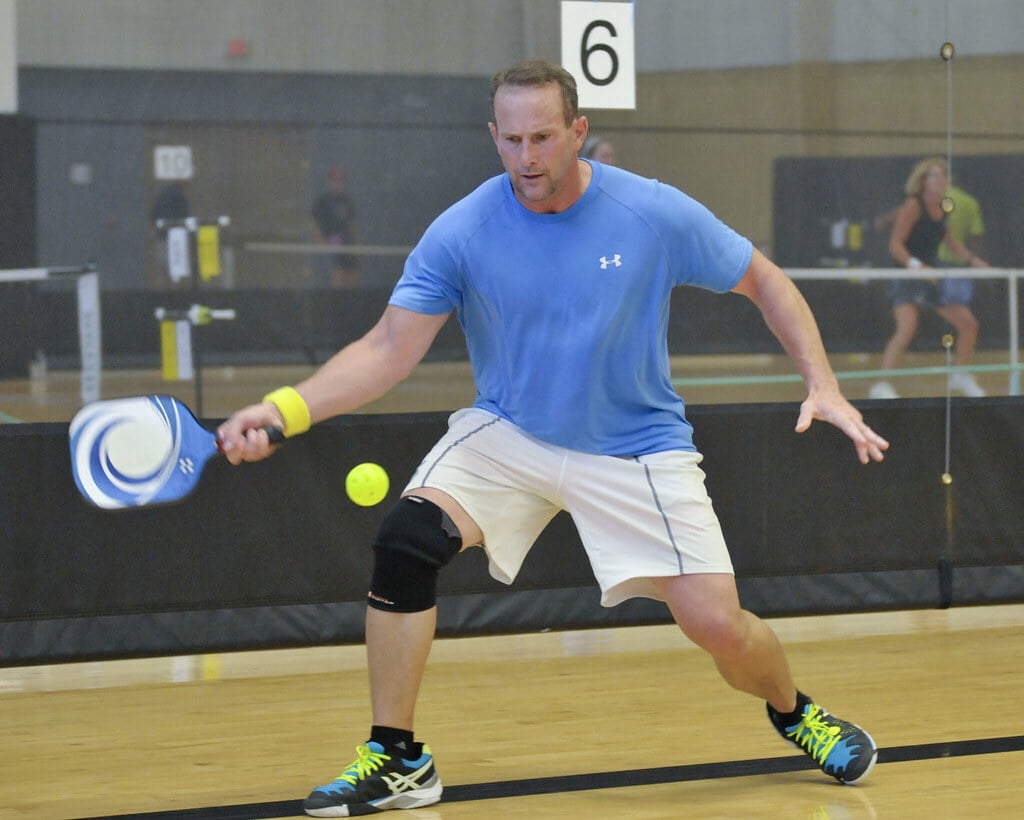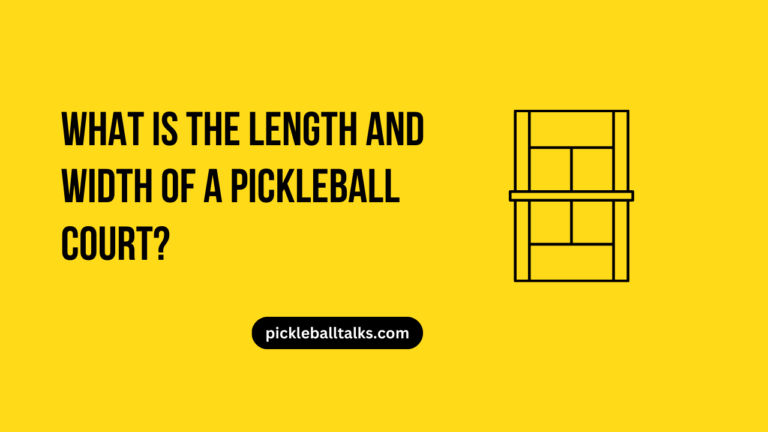Pickleball Basics: Pickleball Return Of Serve Rules

We’re diving into a super essential piece of the game today – the rules for returning of serve in Pickleball. Now, it’s not as tough as it sounds, promise! There are a few simple steps and pointers to keep in mind when you’re on the receiving end of a serve in Pickleball.

Knowing these rules can be a game changer, helping you conquer your matches while keeping the play fair and fun.
So, whether you’re new to the game or are looking to brush up your skills, you’re in the right place!
Time to discover the ins and outs of an effective and rule-compliant return of serve in Pickleball.
the Basics Rule
Before we explore the intricacies of the return of serve rules, let’s start with the fundamentals.
When the server sends the ball your way, your primary goal is to return it over the net and into the opponent’s court.
Sounds simple, right? Well, here’s where the rules come into play.
The Two-Bounce Rule
In pickleball, there is a unique rule called the two-bounce rule.
It states that the ball must bounce once on each side of the court, including the serve.
As the receiver, you must let the ball bounce first before hitting your return.
After the serve, the ball can be hit in the air or after the bounce, opening up a world of possibilities for strategic shots.
The Non-Volley Zone
The non-volley zone, also known as the kitchen, is an important aspect of pickleball return of serve rules.
It’s an area located within 7 feet on either side of the net. When you’re in this zone, you cannot hit the ball out of the air unless it has already bounced.
So, while returning the serve, be mindful of your position relative to the kitchen to avoid penalties.
Why is the soft return or dink a valuable technique in the return of serve?
The soft return disrupts the opponent’s rhythm and forces them to adjust their position.
It involves lightly tapping the ball over the net with precision and finesse.
By employing a soft return, you can gain control of the point and create opportunities for strategic play.
Techniques for a Successful Return
Now that we’ve covered the essentials, let’s explore some techniques that can help you master the return of serve.
Assess the Serve
The first step in returning a serve is analyzing the server’s technique and trajectory.
Observe their paddle position, stance, and how they angle the ball.
By understanding their strategy, you can anticipate the ball’s placement and adjust your position accordingly.
Placement Over Power
Contrary to popular belief, power isn’t everything in pickleball. Instead, focus on precision and placement.
Aim for the opponent’s weak spots, hit the corners, or utilize drop shots to keep them on their toes.
A well-placed shot can be just as effective, if not more, than a powerful one.
Stay Balanced
Maintaining a solid balance is crucial when returning a serve.
Keep your weight centered and your body relaxed to react swiftly.
This will allow you to adjust to different types of serves, whether they’re fast and low or high and slow.
Practice Footwork
Footwork plays a pivotal role in returning serves effectively.
Work on your agility and quick movements to get into the ideal position for a successful return.
This involves anticipating the ball’s trajectory and adjusting your footwork accordingly.
how to return serve in pickleball

1. Anticipate the Serve: Keep your eyes on the server, their body language and paddle position can give you hints about where the serve might land.
2. Ready Position: Stand with your knees slightly bent, feet shoulder-width apart and both hands on the paddle, ready to move in any direction. This will allow you to quickly react and adjust to the incoming serve.
3. Swing Preparation: As the server makes contact with the ball, prepare your swing. This means lifting the paddle into a backswing position while keeping your wrist firm.
4. Strike the Ball: Watch the ball closely as it approaches, and strike it after it bounces once on your side of the court. Aim to strike the ball at waist height, using a forehand or backhand stroke depending on the direction of the ball.
5. Follow-Through: After striking the ball, follow through with your swing, extending your paddle towards your intended target. This will help direct the ball accurately and give it more power.
6. Recovery: Quickly get back into a ready position, preparing for the next shot. It’s beneficial to move towards the non-volley zone line, commonly known as the “kitchen,” preparing for the next play.
Is it necessary to let the ball bounce before returning the serve in Pickleball?
Indeed, it is! One of the key rules in Pickleball is the two-bounce rule, meaning the ball must bounce once on the server’s side and again on the receiver’s side before it can be volleyed or hit in the air.
Can my serve return shot land anywhere in the opponent’s court?
Actually, no. The return of serve must clear the non-volley zone (also known as the kitchen) and land in the area beyond, the court boundaries.
What would constitute a fault when returning a serve in Pickleball?
A fault can occur if the ball is hit out of bounds, doesn’t make it over the net, is volleyed before it bounces, or if the player steps into the non-volley zone to hit the ball.
How can angles be utilized effectively in the return of serve?
Instead of always hitting the ball straight back to your opponent, utilizing cross-court shots can be advantageous. Cross-court shots create wider angles, making it harder for your opponent to reach and return the ball effectively.





![What Muscles Does Pickleball Work? [Expert Answer]](https://pickleballtalks.com/wp-content/uploads/2023/07/What-Muscles-Does-Pickleball-Work-Expert-Answer-768x432.png)
